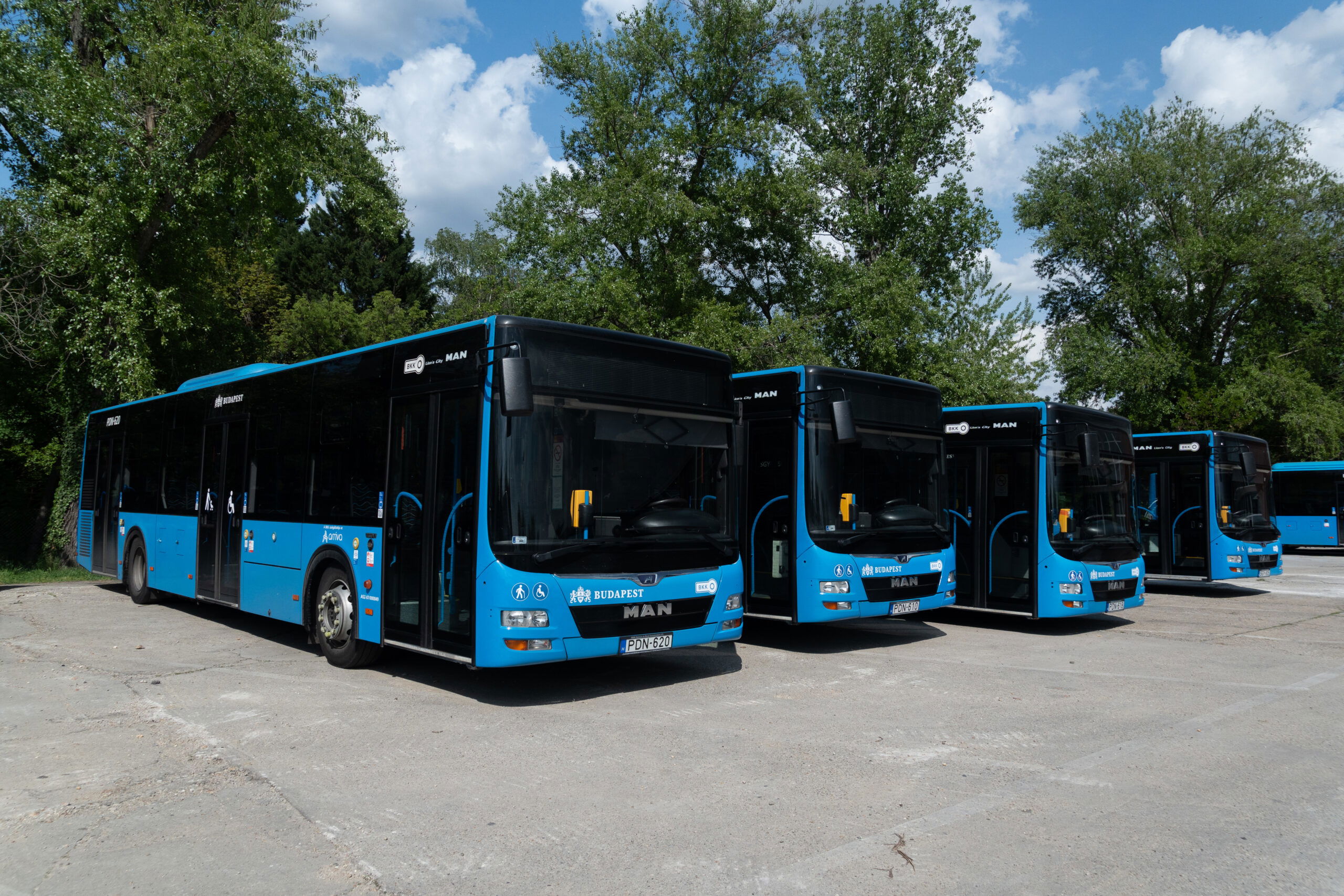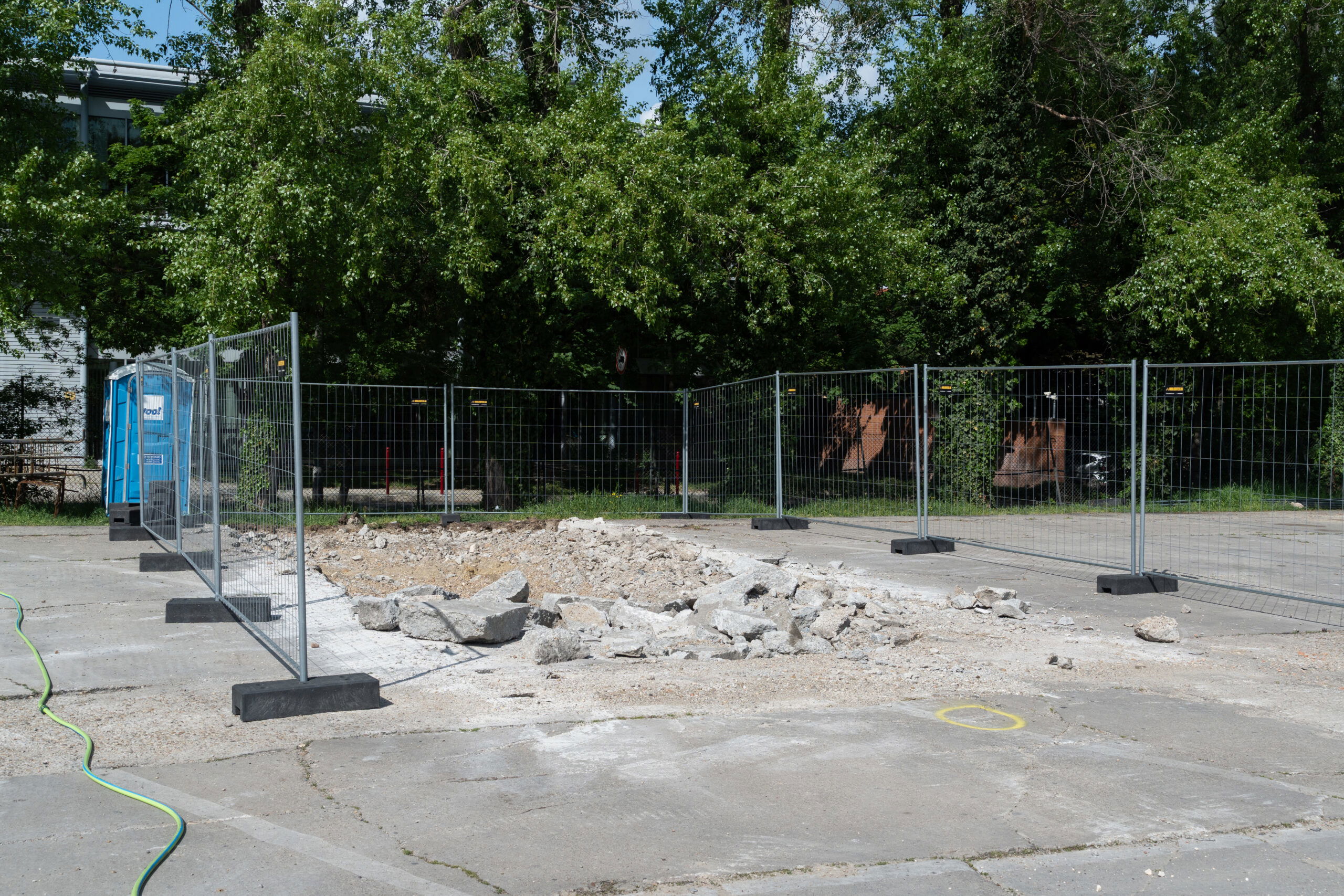Budapest’s public transport is on the brink of a significant transformation. As a result of service order tenders won last year, ArrivaBus is set to introduce a total of 248 brand-new buses, including reserve vehicles, between 2025 and 2027 on designated BKK routes in the capital. Of these, 128 vehicles will be articulated Mercedes-Benz Citaro G models, with an additional 25 solo and 25 articulated MAN Lion’s City buses joining the fleet. The biggest highlight, however, will be the phased introduction of a 82-strong BYD electric bus fleet starting in 2026, which is a significant volume not only in Hungary but also regionally. The deployment of these zero-emission vehicles requires substantial investment and extensive depot modifications, the details of which were shared with us by ArrivaBus experts.
Rethinking from the Ground Up
The new electric bus fleet in Budapest will be based at the Andor Street depot, which needs a complete rebuild to accommodate electric vehicles. This is undoubtedly one of the biggest challenges in ArrivaBus’s history, though not without precedent, as the company’s experts have been preparing for the green transition for over two years. The electrification project planning started in early 2022—initially without a specific tender, considering the future as a sort of “self-initiative”—when the now-expanded team of experts was formed. To gain experience, company employees visited several foreign bus garages servicing electric buses, including those in Wiesbaden and Hamburg.
The Andor Street depot, originally a Volán site, was designed for the traffic demands of the 1960s. However, the current redevelopment considers future expansion possibilities. The investment will proceed in two phases, aligned with the arrival of the buses, with the first phase already underway, involving the demolition of the old building on the site. Subsequently, the fireproof concrete walls for the new charging units will be constructed, forming the framework and ensuring a safe charging environment for the buses. By the end of the first phase, the infrastructure necessary for operating solo electric buses will be ready.
A total of 82 Kempower-manufactured plug-in charging devices with CCS Combo 2 connectors will be installed at the depot, managed by the Finnish manufacturer’s proven software. ArrivaBus also plans to implement an intelligent depot management system to optimize vehicle deployment, internal logistics, and demand-driven charging. This process will be optimized based on data received from BKK and the following day’s schedule, organizing charging and pre-conditioning (heating or cooling the passenger area before the first departure, depending on the season). Simultaneously, the necessary IT and server environment will be established.
The second phase of developments includes transforming the electrical network and establishing infrastructure for articulated buses. A unique 15 MW capacity cabling will be developed at the depot, which involves a complete overhaul of the electrical system. The necessary electricity will be delivered via three dedicated cables to the depot’s new electrical substation. From there, additional dedicated cables will lead to the 10 new transformers and then to the charging points. The cable trenches will be 5 meters wide and 2 meters deep. The 15 MW capacity is more than sufficient for charging 82 electric buses, allowing for future fleet expansion. (For comparison, the Tiszalök hydroelectric power plant outputs 12.9 MW, while the Wiesbaden electric bus fleet, similar in size to Budapest’s, is charged with 2 MW.)
Following this, the first eight Kempower charging islands will arrive, along with the necessary network equipment and servers, with testing beginning after software installation. The entire system is scheduled to be operational by early November.
During the depot’s reconstruction, significant attention is given to fire safety considerations, specifically adhering to the Fire Protection Technical Guideline (TvMI) developed by the National Directorate General for Disaster Management for trucks and buses. The depot’s traffic layout will reflect this: buses will park in a herringbone pattern to facilitate easy evacuation in emergencies without the need for reversing (assuming drivers can safely access the vehicles). Although the charging islands provide some distance, solo electric buses will park 1-1.2 meters apart, while articulated buses will have a 1.5-meter gap. According to regulations, a maximum of 10 buses can charge simultaneously in one group, which ArrivaBus will utilize for solo vehicles, but only eight articulated buses will charge at the same time. Each charging group will be separated by fireproof concrete walls, at least half a meter taller than the vehicles, capable of resisting flames for at least 90 minutes without delamination. These precautions help prevent incidents where a single bus fire could lead to the destruction of the entire fleet, as seen in other cases. However, the lithium iron phosphate (LFP) battery packs used in ArrivaBus’s new vehicles are inherently less flammable than other energy storage solutions.
Cutting-Edge Technology
As is well known, to fulfill the subcontracting tasks awarded last year for the BKK, ArrivaBus will acquire 58 BYD eBus B12 solo and 24 articulated BYD eBus B19 electric buses, including reserve vehicles, for the new service period. According to the company, after thorough tenders and research, the Chinese giant offered the best overall deal. Due to capacity constraints at BYD’s Komárom plant, the vehicles will be shipped from China to Budapest, with the first solo units viewed by an ArrivaBus delegation at BYD’s Qingdao factory on June 2. The obligatory visit, part of the tender contract, aimed to inspect the prototype, discuss technical details, and understand the production processes. We reported on this visit in this article. Experience with BYD electric buses in Hungary is highly positive, with availability rates exceeding 95% in ten cities.
The eBus B12 model debuted at the 2023 Brussels Busworld Europe exhibition and is the most advanced on BYD’s European product line. Its most important innovation, among other technological advancements, is BYD’s proprietary Blade LFP batteries, integrated mainly into the floor structure to improve weight distribution, stability, and passenger space utilization. The energy storage units offer exceptional fire safety—withstanding penetration tests without explosion, fire, or significant heat and smoke generation. This is partly why no BYD bus has ever caught fire due to battery failure. The three-door variant arriving in Budapest, equipped with a 491 kWh total capacity traction battery pack, is designated as B12E03 in the manufacturer’s internal nomenclature. At the Andor Street depot, CCS Combo 2 plug charging will occur at a minimum of 75 kW, though the buses can handle up to 240 kW charging, which will be utilized if necessary during operations.
The articulated BYD eBus B19 (factory code B19E01) model destined for Budapest will feature a 563 kWh total capacity LFP battery pack (providing a range of approximately 430 km at 20% discharge), with battery modules placed on the roof and at the rear of the vehicle. While this construction results in a higher center of gravity, it offers benefits such as easier access and natural air cooling for the batteries, reducing the risk of damage in side collisions. Due to the larger battery capacity, ArrivaBus will consistently use 150 kW charging for these vehicles.
The first electric demo bus and its corresponding charging equipment are expected to arrive at ArrivaBus’s depot by July 15. These will be used to start system testing and staff training, anticipated to take about a month. Training for the vehicles will be provided by BYD, which will also assign a dedicated engineer to ensure smooth fleet operations.
Cover image: MBI Graphics/Gergő Garamvölgyi, original image source: BYD Europe
![Magyarbusz [Info] International](https://bunny-wp-pullzone-9e1je37kud.b-cdn.net/wp-content/uploads/2025/06/cropped-cropped-mbi_sby_v1-scaled-1.png)














